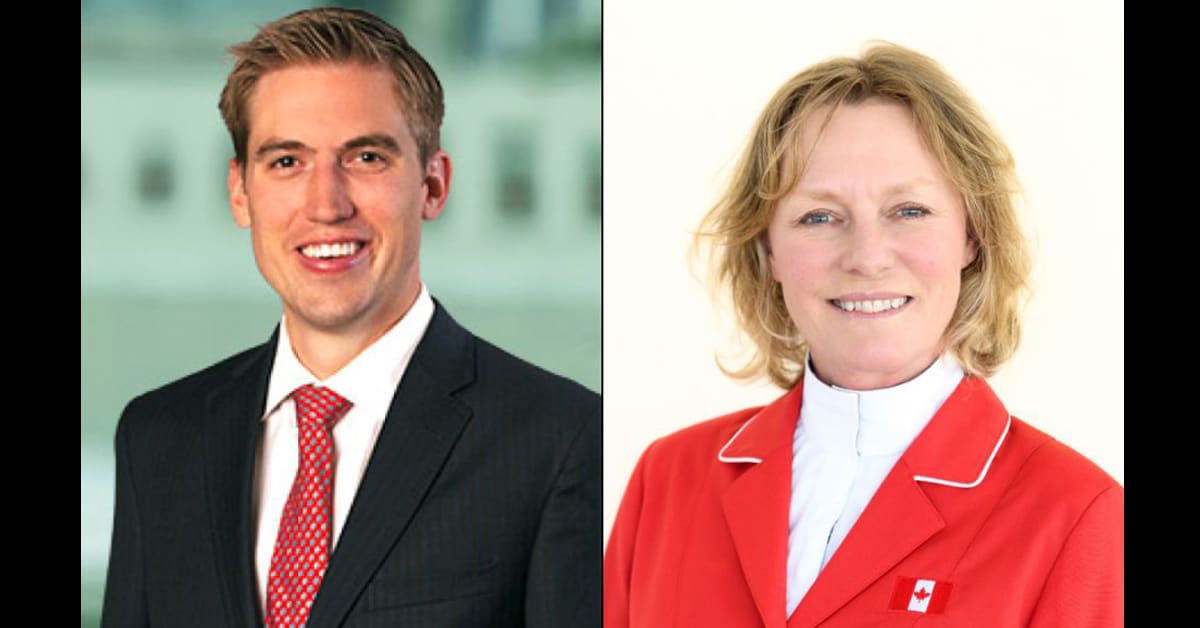Seven months after EC’s infamous new brand reveal that was meant to welcome in a new era for the federation, the management of Equestrian Canada is still shockingly poor. Between the board not knowing EC’s financial position, the inability of the CEO or the president to report the term lengths for board members, the lack of transparency, and the all but non-existent communication with the 27 voting members, EC is a far cry from uniting the community as was promised at launch.
Finances: do we have any?
Two-thirds of the way through EC’s fiscal year, the board still does not have a clear understanding of the organization’s financial position. Given that EC reported a 2015 loss in excess of $450,000 during CEO Eva Havaris’s first year and that Unrestricted Funds showed a loss of almost $340,000 in 2016, the current unknown status is particularly concerning.
In an interview with Horse Sport, EC president Jorge Bernhard and Havaris explained that the combination of losing long-time CFO Mike Arbour, finding a new CFO, and implementing new accounting software has caused major delays in determining the health of the organization’s finances.
“Following the resignation of the CFO in March … we discovered things were not as clear in our account system as they should have been,” said Bernhard. “I am not talking about dishonesty or misspent funds, but a very archaic accounting system that has been difficult to follow.”
The new CFO, Sandra Diaz, was hired in May, but six months later the board still doesn’t have the information they’ve requested. According to EC’s own Governance Manual, board members are to be given monthly financial updates, but that hasn’t happened.
The CEO of any organization is responsible for providing financial information at regular intervals to the board, and it is the board’s responsibility to ensure that there are adequate financial resources available. Neither Havaris or Bernhard, however, knew when financial information would be available. “Hopefully within the next four to six weeks,” said Bernhard in mid-November. “It may take two months, but we have to have it working and we will get a new system that reflects modern practices.”
Since EC has spent heavily in the last year on the brand re-launch, a new website, lots of new staff, travel costs for staff attending several major sporting events, and other costly activities, there is a real possibility that the organization will post another loss in 2017.
The board: how long are they there for and what are they talking about?
Just as concerning as the lack of financial information, is the refusal of the president or the CEO to reveal the length of terms for the board members that were elected this spring. Under the new by-laws, four of the six newly-elected board members have three-year terms, while two would sit for two-year terms. Though the governance manual doesn’t specify how those terms would be determined, they should have been discussed and decided on as the first order of business at the first board meeting.
“The governance committee is working on it now,” said Havaris. “The definition of terms are all being worked on.” Added Bernhard, “It has to be clarified.” Shockingly, both Havaris and Bernhard insist they know what the terms for each board member are, but would not share that information.
Another blow to transparency is EC’s new policy of not providing any discussion details in the minutes of the board meetings. In previous years, some details of the discussion were provided as part of the document, but the latest minutes don’t have any such details. Minutes from 2016 bureau meetings simply note the topics discussed and the final decision, with none of the discussion that occurred included.
“The detail they have is actually the decisions that were made, so there is detail,” was Havaris’s revealing comment about the level of detail and her desire to include any more.
“I think it’s something we need to develop the relationship with the members, what level of information is appropriate?” commented Bernhard. He continued to explain that the bureau is struggling with determining how much and what type of information to include, but he did agree that more information would be provided in future.
Voting Members: What say you?
Under the new by-laws that were approved in 2015, EC now only has 27 voting members, while the rest of the EC card holders are considered “registered participants.” The voting members are divided into three categories representing Sports, Provinces, and Industry interests, but how those groups are meant to communicate with the people they represent still hasn’t been established.
According to Bernhard and Havaris, it is the responsibility of each category to communicate information to the constituents that they represent. “Each of those different [groups], for example, they communicate with their community as they need to, as they wish,” said Havaris. “There has been no sort of parameter around that.”
When you consider the members that make up each category, however, you realize the flaw in this set-up.
The nine members of the Sport group, for example, are prominent individuals in the sporting community, but they are not representatives of a particular group and have no means of communicating to anyone beyond their immediate contacts. The chair of the group is Craig Collins, who runs the Caledon Equestrian Park, but he doesn’t have the ability to communicate with anyone beyond his own clientele, which is mostly based in southern Ontario. Other members of the group include dressage rider Karin Pavicic, driving competitor Michel Lapierre, and dressage judge Cara Whitham. While these representatives are certainly knowledgeable about sport, they don’t have the means to communicate issues back to the industry, nor does the community have any means of communicating with them, as their contact information isn’t provided on EC’s website. Moreover, not all sports are represented in the category, which is missing input from eventing, vaulting, and reining.
The situation isn’t much better with the Provinces or Industry committees. While both of these groups at least have established paths of communication with a group of constituents, there are many organizations that aren’t included. The provinces committee has several reps from Ontario and British Columbia, but none from Alberta, Manitoba, PEI, and several other parts of Canada. The situation is similar with the Industry committee, where it would be impossible to represent the scope of Canada’s varied interest groups just nine members.
Havaris did acknowledge that the new system needs work. “We have our governance chairs (Liz Saunders) who is working with those three groups to look at some of these types of things. How do they wish to communicate? How often do they want to meet? Then we can facilitate that.”
More than a year has passed since the new by-laws were passed, but EC has yet to develop any sort of communication strategy to help the Voting Members and the Registered Participants communicate with one another. It could be as simple as adding a section to the EC website where each Category could include a summary of the issues they are working on, minutes from their meetings, and contact information. Without this structure in place to encourage engagement, EC risks further alienating an already frustrated industry.
Increased Efficiency?
Ironically, EC’s own document about how the new governance model benefits the industry notes that the new system means “that positive changes and innovations that benefit the equestrian community are not bogged down in red tape and can be implemented in a timely and efficient manner.”
Such efficiencies have yet to be seen, on any level. With no established means of communicating, unknown financial resources, and little transparency, it will be impossible for EC to unite the community they are tasked with serving.
More News










